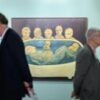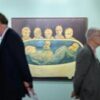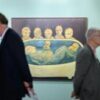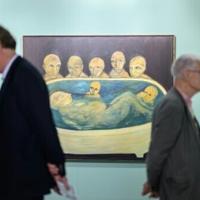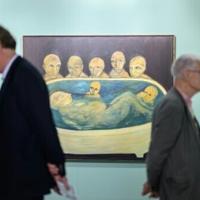Every market crash has its defining image. Lehman Brothers staff taking their boxes out of the building in 2008. Frazzled traders barking into their phones as the stock markets slumped in 1987. Was last month’s failed sale of a sculpture by the 20th-century master Alberto Giacometti, priced at $70 million, the moment that the art market’s bubble publicly burst?
The readiness of the super-rich to pay exorbitant prices for pieces of modern art has long baffled many. But the collective gasp in Sotheby’s New York saleroom as the Giacometti drew no interest suggests that a seismic shift may be under way. Market experts increasingly question whether the next generations, set to inherit billions of boomer wealth, want to spend big on art.
“It is clear to everyone involved in the art market that we are going through a difficult moment. It is possible that this is not just a cycle that can be worked through and that we are looking at something more fundamental,” says Marc Spiegler, global director of the prestigious Art Basel fair for ten years and now a cultural strategist to art foundations and private businesses.
The Giacometti was by no means this season’s only casualty. Among other unsold or withdrawn works were pieces by previous market darlings such as Pablo Picasso, Andy Warhol and Wassily Kandinsky. Works that did sell included some now valued far below their previous auction outings this century. One such example was an oversized shiny orange Easter egg with a hot-pink bow by Jeff Koons, the poster boy of conspicuous consumption. In 2011 this sold for $6.2 million but this year it made a mere $2.3 million.

Jeff Koons’s Baroque Egg with Bow sold for $6.2 million in 2011 but this year it made a mere $2.3 million
NANCY KASZERMAN/ZUMA PRESS WIRE
From 30 years of boom … to bust?
If a booming business is moving into bust, it would mark a dramatic shift with profound consequences. The art market has collapsed before, notably after the 1987 stock market crash, but since then art sales have been on overdrive. At that point, a new class of buyer who made their fortunes in financial services and property began to pile into the artists of their generation. Come the 1990s, collectors in the mould of the marketing guru Charles Saatchi reckoned they could turn emerging talent to money-spinners. Groups just out of art school, notably the Young British Artists such as Damien Hirst and Sarah Lucas, reaped the benefits.
From the turn of this century, as emerging economies such as Russia and China began to boom, the art market experienced its biggest surge in modern history. Niche businesses became an international industry, with a proliferation of swish art fairs and their fine-food concessions around the world. Celebrities including Leonardo DiCaprio, Gwyneth Paltrow and Sylvester Stallone mixed with Gulf royals and Russian oligarchs, putting works by Francis Bacon, Jean-Michel Basquiat and Julian Opie on their walls and in their superyachts.
• The best exhibitions in London and the UK to book for June 2025
Contemporary art saw the greatest gains and, to service the high demand, an entire industry boomed, made up of art advisers, market analysts, executive assistants and assorted flunkies — plus a few opportunistic money launderers.
Even in the aftermath of the 2008 economic crash, art sales benefited hugely from the extra money, fuelled by quantitative easing and low interest rates. In 2015 Picasso’s Les femmes d’Alger (Version O) (1955) sold for $179 million, then the highest price made at auction. Two years later it was an old master painting, Leonardo da Vinci’s Salvator Mundi (c 1500), that comprehensively took this crown — probably for good — when it sold, to a different sort of collective gasp, for $450 million. The painting hasn’t been seen in public since.
But away from the noise of phenomena such as the brief surge in non-fungible token digital art, Spiegler says “the art market has been pretty stagnant”. Total annual sales have hovered at about the $60 billion level since 2009, according to data from the Art Basel & UBS Art Market Report (excluding the Covid-struck 2020). It’s a sum increasingly dwarfed by the wider luxury goods market (jewellery and fashion), which is about $300 billion.
The cracks in the art market are impossible to ignore. After a post-pandemic bump the total value of art sales fell by 4 per cent in 2023 and then slumped by a further 12 per cent last year. Further havoc has been caused by the prospect of President Trump’s tariffs. Art may be exempt from these tariffs under American laws but its moneyed buyers are grappling with unknown implications, which means they are at best distracted and at worst losing money.
That art might not be such a good investment has begun to hit home. “There has been overproduction, overoffering and overhype, to the extent that anything could be expensive,” summarises Loïc Gouzer, founder of the app-based auction platform Fair Warning. Gouzer himself is best known for playing a leading role in selling the $450 million Leonardo.
Changing tastes? ‘There are not ten artists that everyone knows any more’
Just as significantly, however, tastes are changing too. “There’s a clear disconnect between what boomers are selling and what millennials want,” says Caroline Sayan, an auction house veteran who is president and chief executive of the art advisers Cadell North America. The art that runs deep in some of the greatest 20th-century collections, housed mostly in the US and until recently accepted as the best of the bunch (think Rothko, Picasso and indeed Giacometti), might be heading towards its sell-by date. Meanwhile, even some of the hottest contemporary names seem to have lost their edge — last month a mural with a trademark heart balloon by Banksy, once voted the UK’s favourite artist, had no bids at another New York auction.
Banksy’s Battle to Survive a Broken Heart failed to sell at auction in New York in May
SPENCER PLATT/GETTY IMAGES
Instead, the art that is in vogue tends to be in areas that have escaped the hype. These include surrealism, long seen as too niche and nonsensical, whose artists include the Belgian René Magritte, now in the nine-figure club after last year’s sale of his day-turned-night scene L’Empire des lumières (1954) for $121 million. Lesser-known female surrealists such as Leonora Carrington, Dorothea Tanning and Leonor Fini are subject to a surge in attention and prices.
Indigenous art, which packed last year’s prestigious Venice Biennale, has taken over where hot young contemporary artists used to sit: Tate Modern’s next exhibition is of the 20th-century Australian First Nations artist Emily Kam Kngwarray. At the other end of the (taste) scale, celebrity trinkets — from football shirts to Dorothy’s shoes from The Wizard of Oz, one original pair of which sold for $32.5 million in December — are having a moment. Few could have predicted that a moustache comb owned by Freddie Mercury would sell for £152,400, as it did in 2023.
Everyone agrees that the tech-savvy next generation of buyers need to be wooed in a different way. The cumbersome process of buying through dealers or auction houses is putting them off — but what’s the alternative? “No one has built the art world equivalent of Amazon or Net-a-Porter but I’m fundamentally dubious that it’s possible,” Spiegler says. “Nobody needs to buy art, they do so out of passion, which is by its nature irrational.”
New collectors do find work they like via Instagram or TikTok. That’s good news for widening the pool of hip artists but, put simply, bad news for the market. “There are not ten artists that everyone knows any more,” Sayan says.
A new generation wants experiences, not possessions
And when they’re not on their phones, Spiegler sees that “the next generation is more interested in paying for experiences than assets” — stays at luxury hotels or revels at art-themed fancy dress parties, hedonism that can be captured on their Instagram reels. It’s not that they don’t have money to burn. “There are people spending £20,000 a month on rent,” Spiegler says. “They can afford to buy a house but they don’t want to.”
Museums are waking up to how to seduce this experience-hungry next generation — witness the rise of immersive events such as London’s Lightroom, or the UK launch of the Moco Museum, which manages queues around the block in Marble Arch for its Instagram-friendly showing of greatest hits by the likes of Koons, Basquiat and Banksy. For this visitors are prepared to pay £17.90 per person, even while the UK’s in-depth collections are free to see.
Dan Sallick, a collector who sits on the board of New York’s Solomon R Guggenheim Foundation, says that this new generation “craves connection and community”. At the Guggenheim, Sallick says, “they instantly sell out special after-hours events that make the museum feel more like an art social club where you can meet people, make your own art and see the shows in a more relaxed context. They also welcome social media influencers with open arms to interact with exhibitions and tell their own stories.”
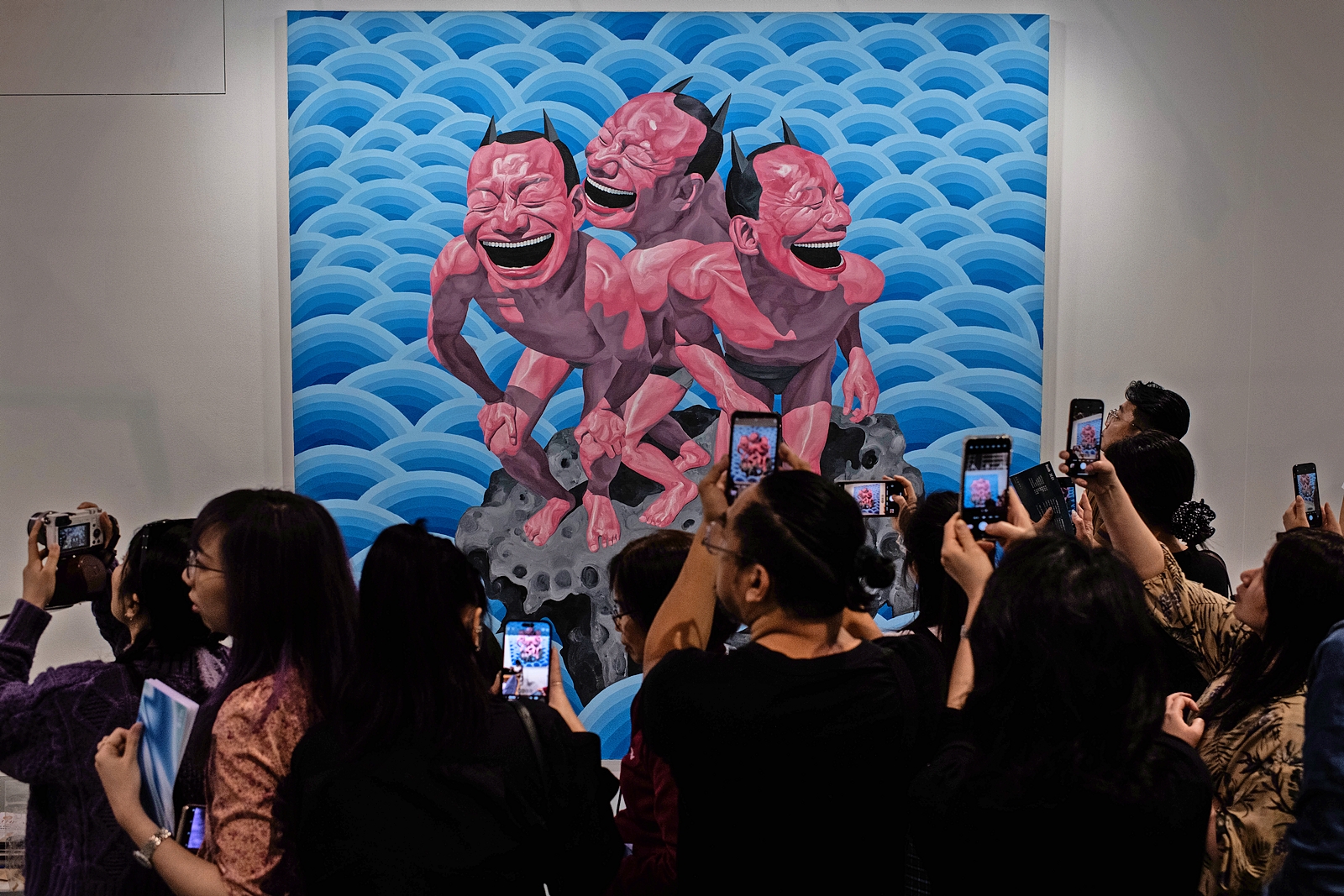



Guests photograph an artwork by the Chinese artist Yue Minjun at Art Basel last year
IVAN ABREU/GETTY IMAGES
London’s recently opened V&A East Storehouse turns its previously backstage objects into an open-access and individualised experience. If you can order what you want from the catalogue and spend an hour with it, do you need to spend hundreds of thousands of pounds (and that’s before you get to insurance) to have it at home?
Spiegler insists that “people are still interested in art, and the visual image has never been stronger, we just have to adapt”. The elusive key to turn this appetite into demand, he says, is for the art market “to figure out how to make buying and selling more than just an asset acquisition”.
So if you have a few depreciating Damien Hirsts lying around, hang tight? “People need to prepare for a market that will be different when it comes back,” he says, “if indeed it does come back.” Now, that is the $70 million question.
Who’s hot and who’s not in the art market
Hot
Leonora Carrington (1917-2011)
Overlooked surrealists and female artists are having a market moment so when the two combine it proves gold dust. The poster girl of female surrealism is the British-born Carrington, whose dreamy scenes of hybrid creatures are hitting the spot. Last year a trademark fantastical work, Les Distractions de Dagobert (1945), made an artist auction record of $28.5 million and was bought by the Argentinian businessman Eduardo F Costantini, founder of the country’s Malba museum. The same work sold for $475,000 in 1995.
Les Distractions de Dagobert by Leonora Carrington
ALEXI ROSENFELD/GETTY IMAGES
Mohammed Sami (b 1984)
For contemporary art to meet today’s mood, it needs to address a cause. In favour just now is the Iraqi artist Mohammed Sami, who grew up under the dictatorship of Saddam Hussein and pours his traumatic experiences into quasi-abstract works. Sami, whose work was selling privately for less than $10,000 not ten years ago, now has an auction record of $952,000. This year he is one of the four Turner prize nominees.
20th-century design
This season Sotheby’s fielded a rare lamp by Frank Lloyd Wright, known as the double-pedestal lamp (1902), a mini version of the minimal, horizonal prairie style used in the designer’s building projects. This sold for $6.1 million ($7.5 million with fees), more than double the previous auction record for Lloyd Wright. Last year a 16ft stained-glass window made by Tiffany Studios and brimming with stylised apple trees sold for $12.5 million, far ahead of its presale estimate and another auction record.




Frank Lloyd Wright’s double-pedestal lamp
COURTESY SOTHEBY’S
Not
Pablo Picasso (1881-1973)
The artist, for so long the bookies’ favourite, was overtaken at the top of the art market’s value charts by the surrealist René Magritte last year. Historically impervious to the market’s highs and lows, there are signs of chinks in the modern master’s armour. Picasso made no disguise of his philandering — his lovers are often his subjects — and while that hardly means the artist has been cancelled, it has led to some revised thinking. This spring his early painting Homme et femme à table (1902-3) was pulled from auction, having been estimated at between $4 million and $6 million, while some of his works that did sell didn’t meet price expectations.
• Damien Hirst at 60: My plan to make art for 200 years after I die
Damien Hirst (b 1965)
The market for Hirst, who recently revealed that he has left instructions for his art to be sold for 200 years after his death, peaked in 2008, the year of his jam-packed direct sale at Sotheby’s, according to data from Artnet. This season a bull’s head in the artist’s trademark formaldehyde sold under estimate for $252,000, while in 2011 a work from this same Disciples series, also with a bull’s head and with the same dimensions, sold for $1.6 million.
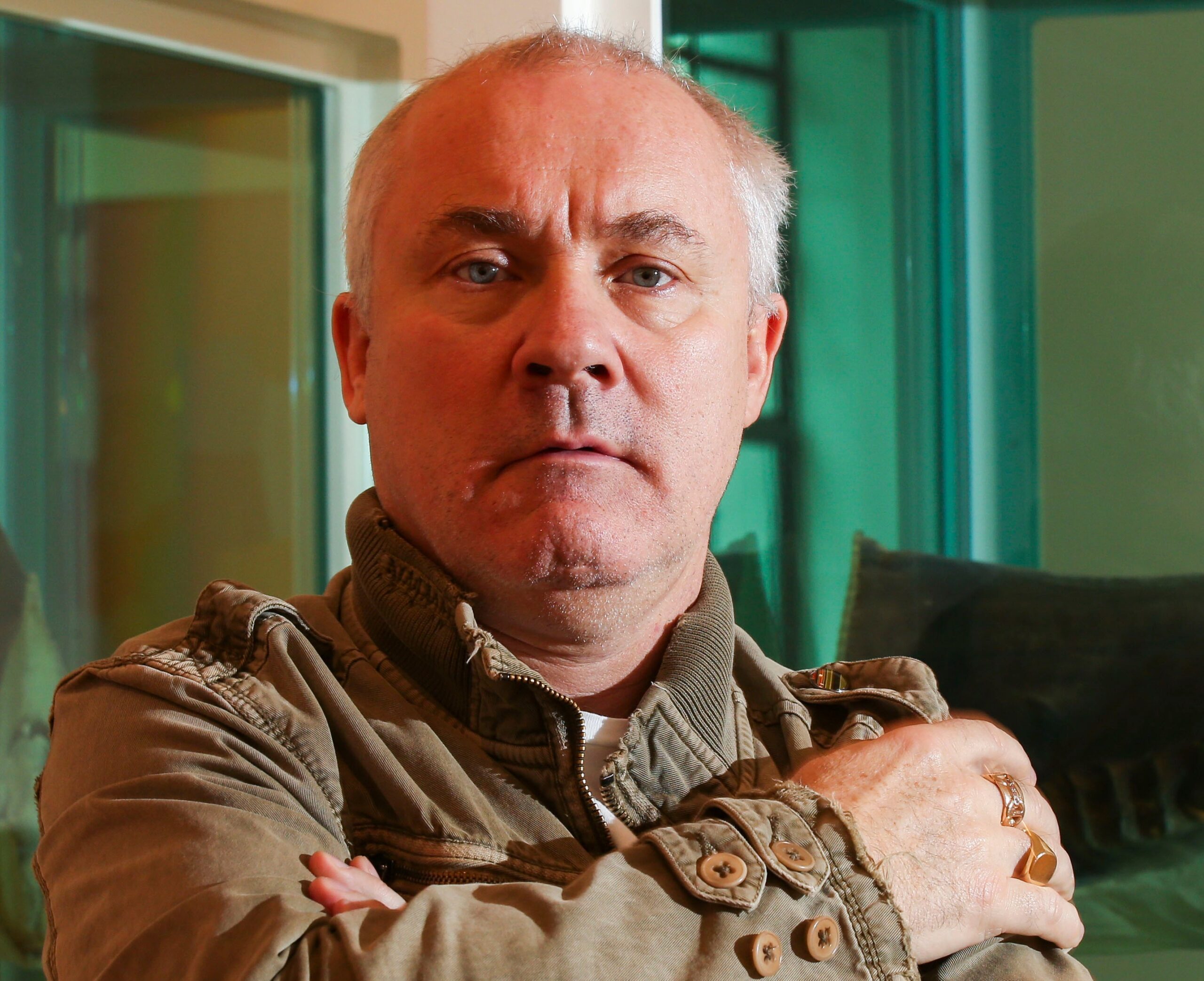



Damien Hirst
K Y CHENG/GETTY IMAGES
Oscar Murillo (b 1986)
Murillo’s childlike, oil stick (crayon) scrawls became seriously hot property in the early 2010s. The Colombia-born artist came to market attention in 2013 when a work he had made just two years prior sold for $401,000 at auction (it had been estimated to make at most $40,000). His position as the ultimate emerging artist did not last long — by 2014 the critics had cooled, the number of his works at auction began to dwindle and he became instead a textbook speculation story. Murillo was a Turner prize nominee in 2019, though, and there is talk of a comeback.
This post was originally published on this site be sure to check out more of their content

